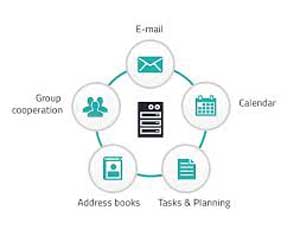 Perhaps no term in the computer industry generates such a mix of enthusiasm, cynicism and confusion as “groupware.”
Perhaps no term in the computer industry generates such a mix of enthusiasm, cynicism and confusion as “groupware.”
In the six years or so since the word was first uttered, groupware alternately has been used to describe everything from basic E-mail to complicated work-flow-automation software. As a result, detractors say, the term ultimately refers to everything, or nothing in particular.
Actually, grasping the principles of groupware “is like riding a bike,” said Brian Plackis, a network manager at MCI Telecommunications Inc., in Richardson, Texas. “You don’t understand it until you’ve done it.”
Plackis and many of his colleagues maintain that groupware should not be considered a category distinct from other types of applications; it’s actually a broad category that includes more definitive types of software.
And although they emphasize the drawbacks and elusiveness of the term, industry analysts acknowledge the applications that deserve to fall under the heading of groupware. Every PC application should in some way enable users to share information, according to these observers. As a matter of fact, in just a short time we will be hard-pressed to find among major PC applications any that are not available with optional links to E-mail programs, the staple of nearly all groupware systems.
Lotus Development Corp. started the trend last year when it launched its Working Together campaign, building cc:Mail hooks into applications such as its Ami Pro word processor and 1-2-3 spreadsheet programs using Dynamic Data Exchange (DDE). And Microsoft Corp. has followed suit: This year it’s touting its plan to enable its spreadsheet, word processor, database and messaging applications to work in concert via Object Linking and Embedding, NetDDE and the Messaging Application Programming Interface.
To provide users of its Windows for Workgroups with groupware capabilities, Microsoft is relying on such a patchworked approach (see Review, Page S/16). Lotus, however, is following a different route. Like most of Lotus’ applications, Notes has the ability to work in tandem with other Lotus and third-party applications to provide groupware capabilities. What sets Notes apart is that, even when deployed alone, it is genuine groupware.
Applications that fit the groupware bill can fall into six categories.
In the first group are messaging systems, such as Lotus’ cc:Mail, Microsoft’s Mail for PC Networks and Da Vinci Systems Corp.’s eMAIL. These systems enable users on a LAN or WAN to exchange E-mail, which may or may not include attachments. Almost every available groupware application includes its own E-mail system or taps into that of another vendor.
Three other types of more traditional applica-tions play off of the messaging systems.
The first of these, exemplified by Lotus’ Notes, uses a combination of E-mail and database capabilities to make possible the sharing, organizing and archiving of ideas in a work group. Mainstays of Notes are its high-security E-mail system, replicated object-store capabilities and end-user development capabilities. Notes is the only turnkey application that lets users build message databases for enterprise WANs; no other vendor is close to releasing a similar system. However, developers at firms such as Mi crosoft and Borland International Inc. are working on their own products to help them organize messages by tapping databases of their own and those of other vendors.
The second category of groupware that works closely with E-mail comprises message-filtering applications. In this area, as in the area of database-enabled messaging applications, one company blazed the trail.
Two years ago, Beyond Inc. released its BeyondMail E-mail program, featuring a rules engine that lets users create software agents that automatically file, forward or delete messages based on their content. Although the program works with only Beyond’s own messaging program, officials said they plan to release next year message-filtering software to work with mail systems, such as Microsoft Mail, and to be included with Notes.
Other developers are creating their own rules-based message-filtering programs. Both Lotus and WordPerfect Corp., for example, will make available next year message-filtering capabilities for cc:Mail and WordPerfect Mail, respectively, said officials for both companies.
The third type of groupware that works closely with E-mail comprises work-group application-development programs. Software in this category is designed to enable users to create custom applications on top of E-mail. Startup Reach Software Inc. is one of the pioneers in this group, with WorkMan, an application designed to help users build systems that use E-mail to automatically route information across their networks. Digital Equipment Corp.’s TeamLinks provides the same capability via its Team Route featu re.
Once a market niche dominated by smaller vendors such as Powercore Inc. and Campbell Services Inc., calendaring and scheduling is increasingly the purview of such vendors as Microsoft, which offers Schedule+ for Windows as an option to its mail system; NCR, which provides those capabilities in Cooperation; and Lotus, which plans to do the same next year.
Finally, document-management and imaging systems should be counted as groupware. All these programs allow users to scan, archive and redistribute image and text files. Some of these systems, such as Keyfile Corp.’s namesake program, include tools that make them somewhat like the application-development environments mentioned above.